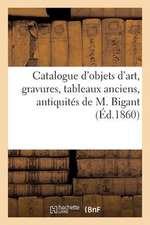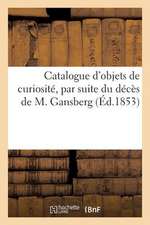Dynasty and Piety: Archduke Albert (1598-1621) and Habsburg Political Culture in an Age of Religious Wars
Autor Luc Duerlooen Limba Engleză Hardback – 28 mar 2012
| Toate formatele și edițiile | Preț | Express |
|---|---|---|
| Paperback (1) | 445.37 lei 6-8 săpt. | |
| Taylor & Francis – 24 mai 2017 | 445.37 lei 6-8 săpt. | |
| Hardback (1) | 1037.83 lei 3-5 săpt. | +20.62 lei 7-11 zile |
| Taylor & Francis – 28 mar 2012 | 1037.83 lei 3-5 săpt. | +20.62 lei 7-11 zile |
Preț: 1037.83 lei
Preț vechi: 1140.47 lei
-9% Nou
Puncte Express: 1557
Preț estimativ în valută:
198.58€ • 207.36$ • 163.99£
198.58€ • 207.36$ • 163.99£
Carte disponibilă
Livrare economică 25 martie-08 aprilie
Livrare express 11-15 martie pentru 30.61 lei
Preluare comenzi: 021 569.72.76
Specificații
ISBN-13: 9780754669043
ISBN-10: 0754669041
Pagini: 610
Ilustrații: Includes 14 b&w illustrations
Dimensiuni: 156 x 234 x 33 mm
Greutate: 0.45 kg
Ediția:New ed
Editura: Taylor & Francis
Colecția Routledge
Locul publicării:Oxford, United Kingdom
ISBN-10: 0754669041
Pagini: 610
Ilustrații: Includes 14 b&w illustrations
Dimensiuni: 156 x 234 x 33 mm
Greutate: 0.45 kg
Ediția:New ed
Editura: Taylor & Francis
Colecția Routledge
Locul publicării:Oxford, United Kingdom
Notă biografică
Luc Duerloo is professor of early modern political history at the University of Antwerp, Belgium. He has published on the Habsburgs, the politics of piety and the Belgian nobility.
Recenzii
A Yankee Book Peddler UK Core Title for 2012 'This book abounds with striking new insights... this is an outstanding study of an important yet overlooked European ruler and his world.' Geoffrey Parker, American Historical Review 'Luc Duerloo’s work on Archduke Albert has certainly been worth the wait... This really is a work that should be incorporated in all future textbooks on the Dutch Revolt, the Thirty Years’ War, and their related conflicts.' Renaissance Quarterly '... as a whole Duerloo has delivered an interesting overview of European politics in the early-seventeenth century in which he makes connections that most historians have overlooked, showing the influence of family matters on Habsburg international policy.' Catholic Historical Review 'This impressive study is concerned with three interrelated themes. It offers an up-to-date biography of Archduke Albert of Austria (1559-1621), analyses international relations in the early seventeenth century and assesses the forces behind Habsburg politics in this period. In all these areas it sheds authoritative new light... Duerloo’s book will be a point of reference for decades to come.' Journal of Ecclesiastical History 'Luc Duerloo nimmt eine schlüssige Neubewertung der dynastischen Politik der Erzherzöge Albrecht und Isabella im europäischen Kontext vor. Seine präzise Analyse bildet die Grundlage für jede weitere Beschäftigung mit diesem Themenkomplex und macht 'Dynasty and Piety' zu einem Standardwerk zur Geschichte des Hauses Habsburg im ersten Viertel des 17. Jahrhunderts. ['Luc Duerloo makes a final revaluation of the dynastic politics of the Archdukes Albert and Isabella in a European context. His precise analysis will form the basis of any further research into the theme and makes ’Dynasty and Piety’ a standard work on the history of the Habsburg dynasty in the first quarter of the 17th century.] Francia-Recensio
Cuprins
Introduction; 1: Wet Paint; 2: Rural Pursuits; 3: Burning Lamps; 4: Lewd Instruments; 5: Calculated Ambiguities; 6: Family Matters; 7: Fatal Ambitions; 8: Old Masters; 9: Unfolding Legacies; 10: Cometary Turmoil; 11: Virgin Victorious; Conclusion
Descriere
Through an investigation of Archduke Albert's (1559-1621) reign as ruler of the Spanish Netherlands, this book offers a new and fuller understanding of international events of the time, and the Habsburg role in them. Drawing on a wide range of archival and visual material, the resulting study of political culture demonstrates how the House of Habsburg functioned as a dynasty during critical years of increasing religious tensions. Based on extensive research in the archives left by the archducal regime and its diplomatic partners or rivals, it bridges the gap between the reigns of Philip II and Philip IV and puts research into the period onto a fascinating new basis.























